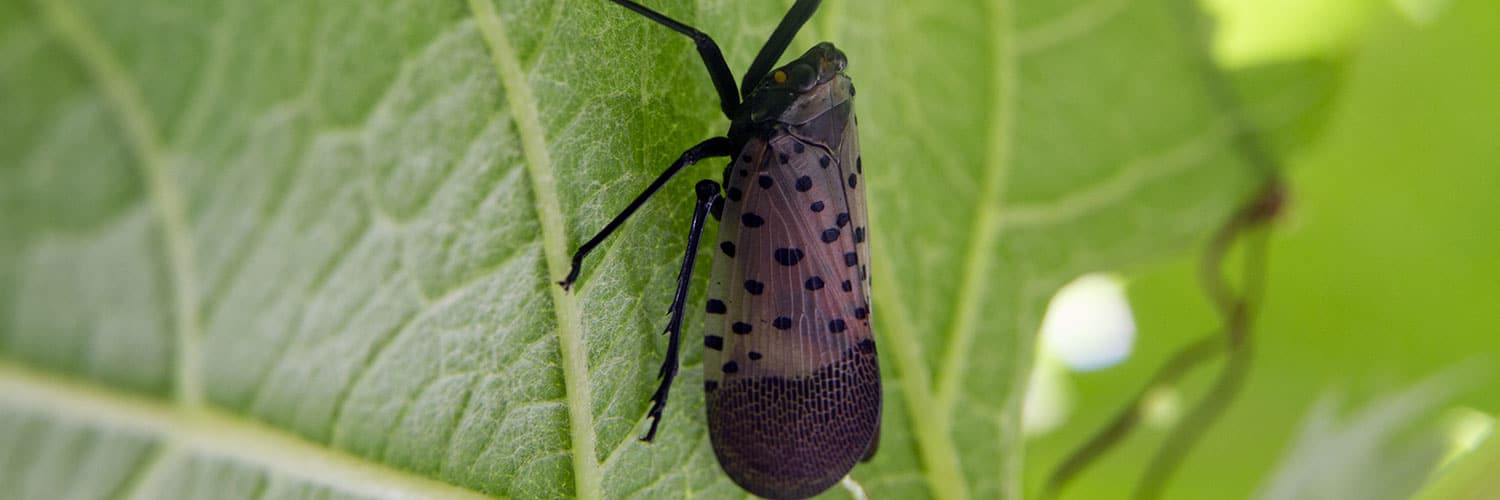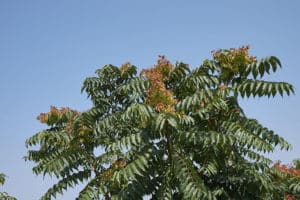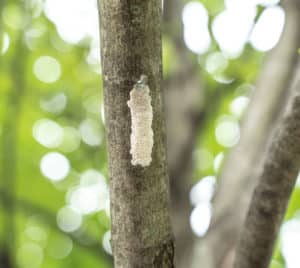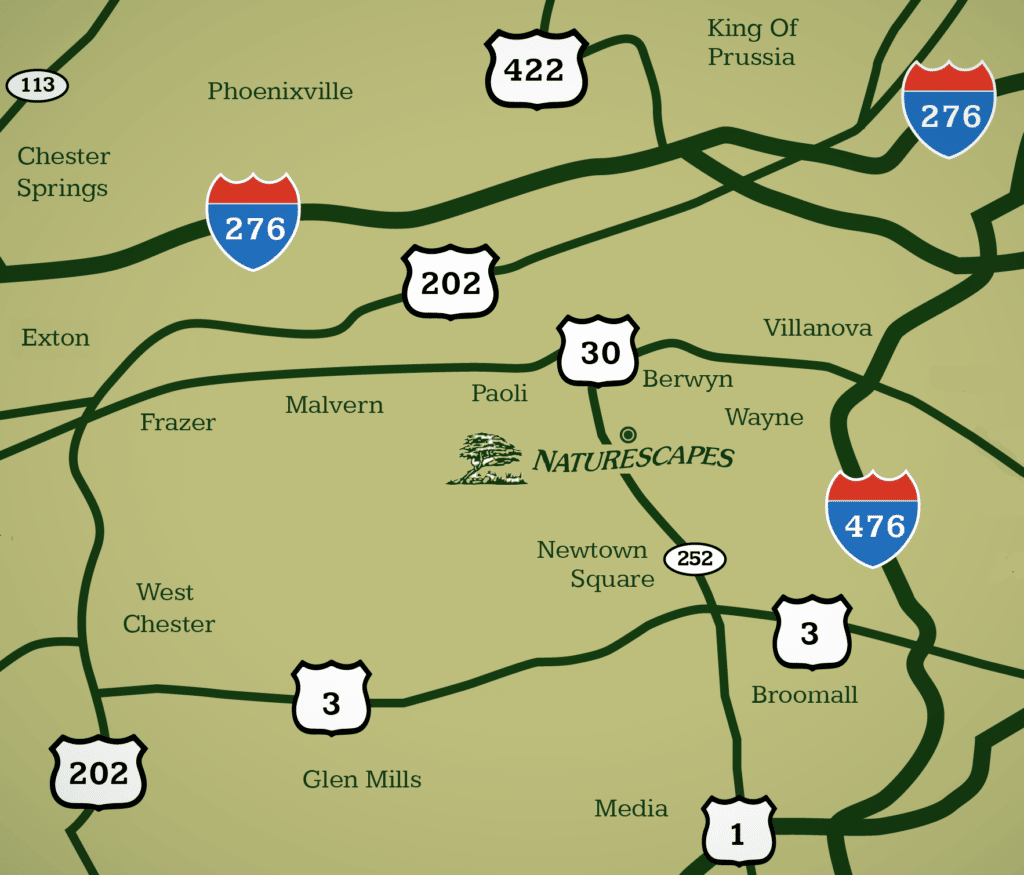
Our newest insect problem comes to us via China although its home is also India, Vietnam, and eastern Asia. It’s really a plant hopper more than a fly. The adult is actually quite interesting looking with a bright crimson spot under the gray and black-spotted wings.
What Makes Them So Damaging?
These insects do their damage as nymphs during their stages of development called instars. They suck plant juices with piercing/sucking mouthparts and can do damage to various trees, shrubs, and vines (such as grape). Secondly, their excretion called ‘honeydew’ can be a vector for black sooty mold which can smother the plant stems and cause death.
The Lifecycle of a Spotted Lanternfly

Spotted Lanternflies hatch from egg clusters in April and May, then attack their hosts through their various instars until they reach their adult stage in late July-August. Then, after mating, the female will lay her eggs in clusters on almost any vertical surface (trees, rocks, furniture, siding, etc.).
They are most fond of Tree of Heaven (Ailanthus altissima) for egg laying but will adapt as needed.
Tree of Heaven is itself an invasive weed tree and should be removed for a host of other reasons. Learn more here.
How to Get Rid of Spotted Lanternflies
Control of these planthoppers is important. Before the spring hatch, brown sticky tape can be applied to the bases of trees to trap the young nymphs as they hatch and move around. Brown tape seems to be more effective than other colors.

Remember these Spotted Lanternfly egg masses can be on any relatively smooth vertical structure, not just trees.
Kill any adults you see congregating in late summer to fall with a fly swatter or similar means.
Insecticidal soaps, oils, and pyrethrums can be sprayed also.
For active nymph feeding in trees, shrubs, or vines control can be done with certain selective insecticides or more favorably by spraying native fungi. This is probably best done by a professional arborist so as not to adversely affect beneficial insects or pollinator populations. There is a discussion of bringing in natural predators such as wasps as found in their native countries but these are not yet used in bio-control.
Do your part to help control the spread of this pest.
What Else Can You Do?
For more information, visit this article from the Pennsylvania Landscape & Nursery Associaton.
We’ve written on our blog about Spotted Lanternflies in the past. Check out our past post for more information about this invasive insect, including more things you can do to stop them and why you should be hesitant to trust anyone offering professional services to remove them.
